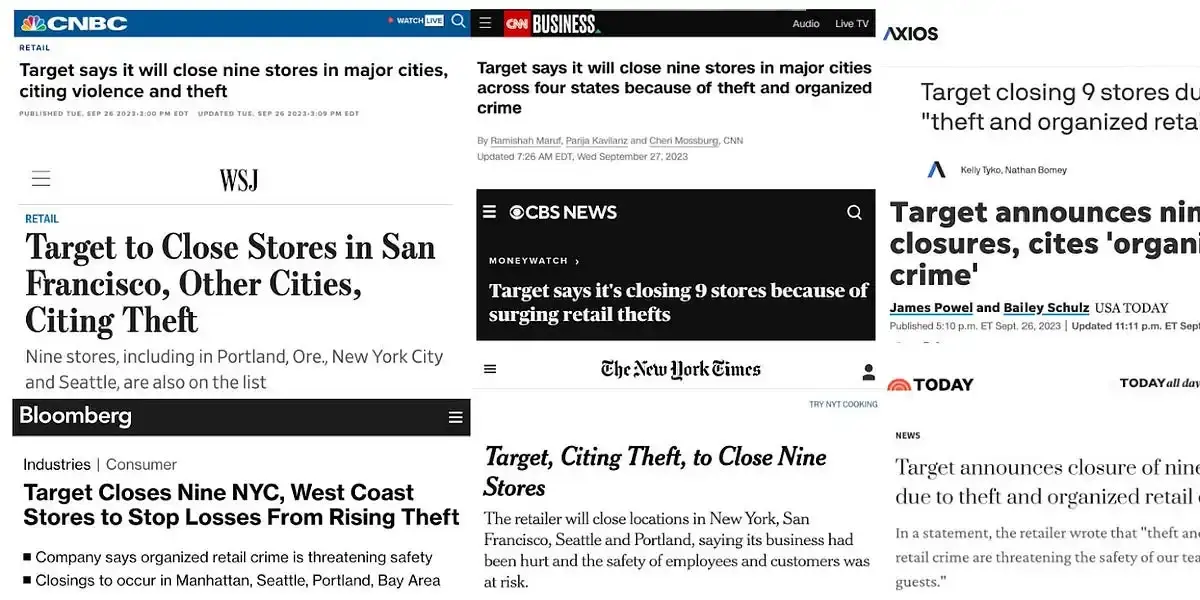Popular Information analyzed publicly available crime data for the stores Target is closing in New York and San Francisco. This data reveals that stores that are being closed have lower levels of theft than nearby stores that have remained open. An analysis of the stores Target is shuttering in the Seattle area follows a similar pattern. This data suggests that factors other than crime are driving Target’s decisions.
In June, Target CEO Brian Cornell said the company was saddled with large quantities of unwanted merchandise that it was forced to deeply discount, cutting into profit margins. Moreover, Target’s stores include “many fun and impulse-driven items,” but that merchandising mix “has become a liability as consumers focus on needs rather than wants and put discretionary dollars toward vacations and concerts,” CNBC reported in August. Groceries only account for 20% of Target’s sales, compared to 50% at competitors like Walmart.



The number of reported shoplifting occurrences is meaningless if you aren’t weighing it by the volume of sales coming from each store as well.
A store that has twice as much shoplifting but also 3 times the sales, is still going to be a better deal to keep open.